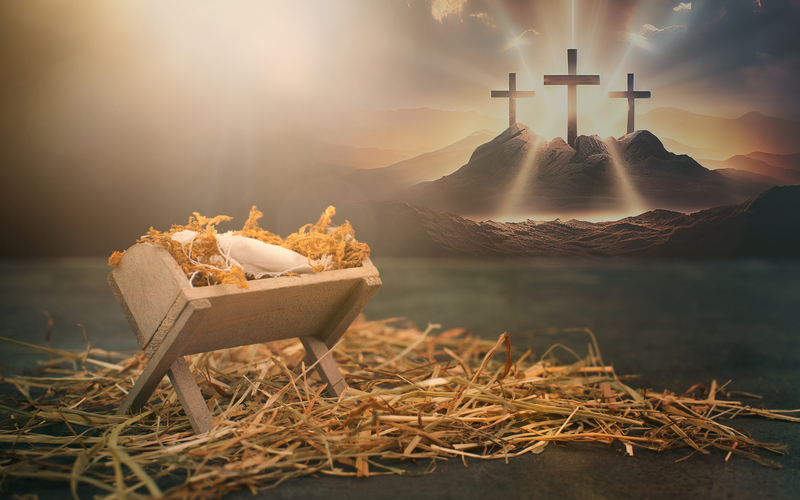Beautiful, Creeping, Sin
Sign up for a six month free
trial of The Stand Magazine!
We have had quite a springtime here in Mississippi. Between the extensive rains, the usual tornado threats, and the bouts of intermittent arctic blasts, we are more than ready for some consistently warmer weather. Thankfully, the sunny yellow daffodils, the pink and purple crocuses, and the flowering white Bradford pear trees provide us just enough hope that winter is almost over.
But perhaps the most gorgeous springtime sight has been the purple wisteria vines growing wild along the roads. Maybe we have the excessive rains to thank, but for some reason, the wisteria is more abundant this year than in previous springs.
For those of you who have never seen it, wisteria is absolutely beautiful. It comes in shades of pink, white, and purple, but the abundant wild variety here in Mississippi is almost always purple. And nothing on earth smells quite like budding wisteria. Its sweet, earthy, heady fragrance is better than any perfume available.
So, last week, we had the opportunity to take a long car ride and enjoy the lavender flowers draping and hanging from trees for miles around. In some places, the wisteria had even overtaken abandoned barns and sheds, camouflaging the dilapidated buildings and weighing them down with their beautiful, fragrant vines. The encroaching vines had also engulfed and obscured old road signs and fence posts along the country roads we followed. Everything was a purple mass of glorious, creeping wisteria.
My husband and I both remarked that we could not remember a time when the wisteria vines were quite so impressive and widespread. And we both remarked that it was ironic that something so beautiful and seemingly harmless was, in fact, such an encroaching, all-consuming parasite that covers and destroys its host, whether that host is a plant, a tree, or even a building.
Wisteria is actually a flowering vine of the legume family that was transplanted to America from Asia in the early 1800s. The vines can grow clockwise or counterclockwise, depending on the situation. And the vines can travel up an entire tree, more than 60 feet off the ground. The trunks of the wisteria can be as thick as a man’s wrist, and the seed pods that hang from wisteria vines are poisonous.
We discovered that important fact a few years back when our sweet momma bulldog got sick after playing in our backyard. After a bit of detective work, we discovered she was munching on our neighbor’s wisteria vine that was hanging over the fence. We quickly trimmed the wisteria back and felt very blessed that no permanent damage was done to our sweet Daisy. The situation could have been much worse, according to what we read online from other pet owners and vets.
Needless to say, our opinion of wisteria changed drastically at that point. So, the beauty and aroma of our springtime ride last week was tinged by our knowledge of Daisy and her experience with the wisteria vine.
Now, the literature teacher and writer in me wants nothing more than to see the romantic beauty of those flowering purple vines and write something as a tribute to such splendor. But the Christian in me cannot help but think of wisteria in the context of sin.
I know, I know. The topic of sin might seem farfetched when talking about a beautiful flower, but stop and think about it. Sin is a lot like those gorgeous wisteria vines.
Things that seem innocently beautiful at first have a way of slowly but surely overtaking our lives. Our first encounter with sin leads to the next, and the next, and before we know it, the sin has consumed us. Who we are and what God has planned for our lives become engulfed by that all-consuming sin. And many times, we become unrecognizable to those who love us most. At other times, we think our sin is hidden underneath the tangled, gorgeous façade that we live behind, in order to continue in that sin.
Whatever the path, clockwise or counterclockwise, sin will not stop till it achieves its goal. The Bible says it most succinctly in James 1:15, “Then when lust hath conceived, it bringeth forth sin: and sin, when it is finished, bringeth forth death.”
I am reminded of the biblical story of King David and Bathsheba. What began as an innocent and accidental viewing of a woman bathing grew into an adulterous, murderous affair. And in the process, King David became so entangled by his own deceitful heart that he did not even recognize his outrageous sins when they were recounted to him by Nathan the prophet.
Just like the biblically predicted pattern, David’s lust was conceived on that rooftop; it brought forth the sin of murder on a battlefield, and, at its finish, David’s sin brought forth the death of his innocent newborn son.
And that brings me back to the creeping, crawling, all-consuming nature of wisteria.
Now, as a southern girl, I will forever love the sight and smell of wisteria. But as a Christian, I pray that those beautiful purple hanging clusters of fragrant blossoms remind me that I must also cling to the Savior as my own source of strength. Otherwise, the sins of this world will quickly and completely consume me, just like the dilapidated barn I saw last week covered in wisteria.

Sign up for a free six-month trial of
The Stand Magazine!
Sign up for free to receive notable blogs delivered to your email weekly.



















